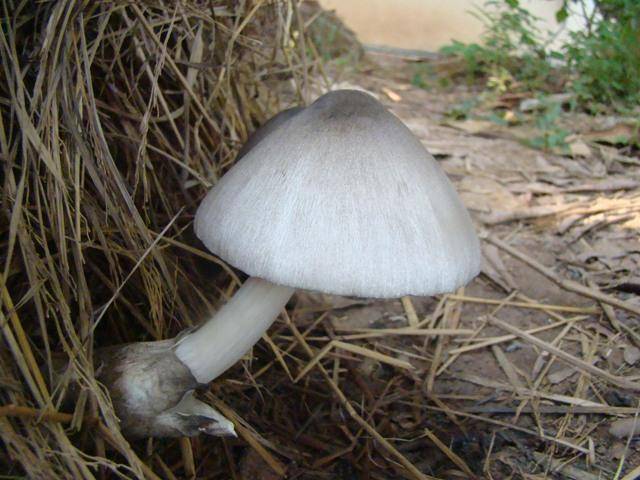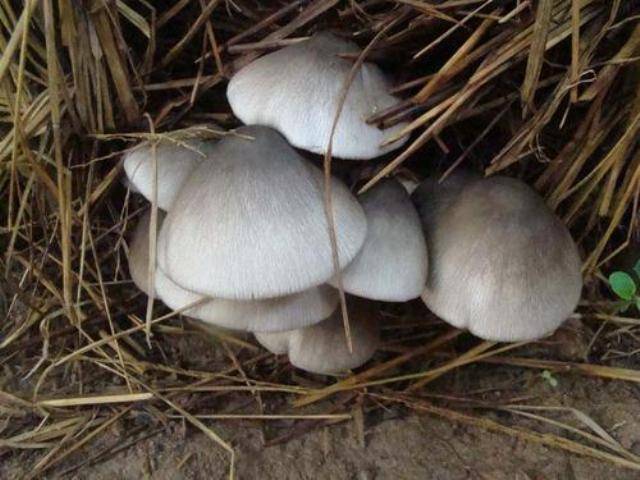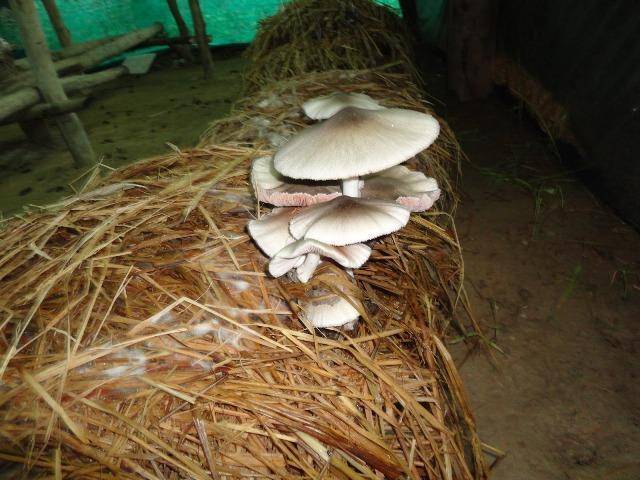
Paddy straw mushroom (Volvariella species) is cultivated in the tropical climate of India. 'Even then it is less attractive commercially owing to very low yield per unit weight, of the substrate and an extremely short shelf life. But, as a kitchen garden crop it is preferred because it is very delicious and also nutritious.
The cultivation of this mushroom was first tried at Coimbatore and since then its cultivation has been taken over at other places also. It grows at high temperature between 30 and 45°C. It can therefore, be cultivated during the summer months. A variety of materials have been tried for cultivation, for example, cotton waste, paddy straw etc. In India, three species of Volvariella are grown, namely V:diplasia, v: volvacea and V:esculenta. Volvariella volvacea is the most commonly grown mushroom out of this species.
Cultivation
Paddy straw (Volvariella species) which is to be used should be uncrumpled, not very leafy, not more than one year old and preferably should be hand threshed. It should be stored at a proper place so that it does not get wet during rain. Paddy straw is made into bundles. The bundles are soaked in water for 18 to 24 hours. Soaking can be done in small tanks and the bundles should be completely immersed in water. The bundles are taken out and excess water drained off. The bundles are arranged such that they make one layer on which small bits of spawn are placed 3 to 4 inches inside the margin, leaving a space of 5 to 5.5 cm from each other. A small quantity of arhar or gram dal powder is sprinkled over the spawn bits. Each layer is spawned in the same way. Finally the last layer is spawned all over and covered with a thin layer of loose straw and the bed is pressed down. The bed is covered with a polythene sheet. Watering depends upon the humidity of the air. Mostly no watering is required for the first 3 or 4 days. Watering of the beds and temperature within the beds are very important factors for the yield of paddy straw mush-room.

The bed temperature should remain between 30 and 35° C after spawning. The temperature should not go below 30°C during the growing period. Small buttons start appearing 7 to 10 days after spawning. At that time the polythene sheet should be removed from the bed. They remain in the button stage for 4 to 5 days and then grow into full size. Picking is done by gently twisting the fruiting bodies. Different methods are used for cultivation by different workers. Spawning the different layers of the bed is an influencing factor in straw mushroom production. Spacing between the spawn bits also influences the yield. Smaller spacing (5 cm) between small spawn bits (10 mm) and larger spacing (10 cm) between large spawn bits (100 mm) gives better yield.
Volvariella species can also be grown in winter. The only care taken is to maintain the temperature of the bed. As the atmospheric temperature is low, the bed temperature will also be low. Hence, bed temperature is increased by incorporating the leaf materials which can be used fresh or partially dried. The bed is compacted and covered with transparent polythene sheet.

Preservation
Paddy straw mushroom has very little shelf life. It is consumed fresh but it can be preserved either by dehydration or by canning. Fresh mushroom must be consumed immediately after harvest. If it is preserved at a low temperature (10 to 15o C) it can be kept well for about 48 hours. If the mushrooms are immersed in 10 percent brine solution followed by drying in the air they can be preserved for one week. Drying is done either in the sun or at a temperature of 55 to 60o C. Fresh mushrooms are reduced to one eighth their original weight after dehydration. Dried mushrooms can absorb water from the atmosphere, so they should be packed either in aluminium foil or in polythene bags. If they are not dried properly they give a foul smell, which however, goes off during cooking.















